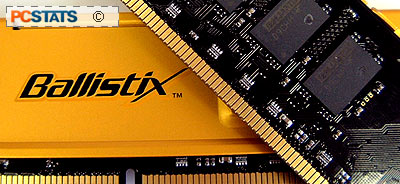 Unreal Tournament
2003 Unreal Tournament
2003 |
Source:Epic |
|
Unreal Tournament 2003 is the sequel to 1999's
multiple 'Game of the Year' award winner. It uses the very latest Unreal Engine
technology - where graphics, sound and game play are taken beyond the bleeding
edge. Unreal Tournament 2003 employs the use of Vertex as well as Pixel Shaders
and it's recommended that you use a DirectX 8 videocard to get the most out of
the game.
At 640x480 we're not as videocard bound as we were in the other
benchmarks, and again we find that Crucial Ballistix performs about the same as the
other DIMM's. Overclocking boosts framerate more in the botmatch portion of the
test than the flyby.
 Unreal Tournament 2004
Unreal Tournament 2004 |
Source: Epic |
|
Unreal Tournament 2004 is the sequel to the highly
popular UT2003 and uses the very latest Unreal Engine technology. Unreal
Tournament 2004 employs the use of Vertex and Pixel Shaders and it's recommended
that you use a DirectX 9 videocard to you plan to play competitvely.
UT2004
is a new benchmark for us. In it, we see that at stock speeds all memory
performs about the same, which should not be any surprise. Overclocking does
boots performance a tad in the dm-rankin demo, and even more with the as-convoy
test.
Conclusions
 I can't
speak for everyone, but I was certainly caught off guard when Crucial announced it was releasing
an enthusiast class of memory. Who would of thought that Crucial, the
same company that handles memory upgrades for the masses, would put out something like
the Ballistix series of DDR2 memory?
I can't
speak for everyone, but I was certainly caught off guard when Crucial announced it was releasing
an enthusiast class of memory. Who would of thought that Crucial, the
same company that handles memory upgrades for the masses, would put out something like
the Ballistix series of DDR2 memory?
With Crucial gunning for overclockers, the likes
of Corsair, and Kingston should take notice. On the other
hand, consumers should be pleased to see a manufacturer of Crucial's
caliber producing memory to
suit our niche overclocker needs.
As we have just tested out two 512MB sticks of Crucial Ballistix PC5300 DDR2
DIMM's that are intended for the highest performance Pentium 4 systems on the market,
things could not be more exciting! By default this Crucial Ballistix memory is capable of running
at 333 MHz (or PC5300 speeds) with timings of 4-4-4, at only 1.9V.
During tests, we saw 266 MHz (or PC4200) speeds (default for Socket
775 Pentium 4's) with 3-3-3 timings easily handled.
The performance of the Crucial Ballistix memory was excellent,
and it's nice to see that DDR2 is quickly taking over from where DDR
memory left off. As for how high the memory can go, no one knows right
now. The i925X motherboard we use for testing is affected by Intel's FSB lock,
so when we find a board that doesn't have this limitation,
we'll give the Ballistix memory another run.
With a retail price of $618 CDN ($478 US) for a pair of 512MB
sticks of Ballistix DDR2 memory, equipping your rig is going to be quite pricey.
Still, on the DDR2 front there aren't many other enthusiast class modules to choose from, so
consider yourself lucky!
Find out about this and many other reviews by joining the Weekly PCstats.com Newsletter today!
Related Articles
Here are a few other articles that you might enjoy
as well...
1. Crucial PC4200
DDR-2 Memory Review
